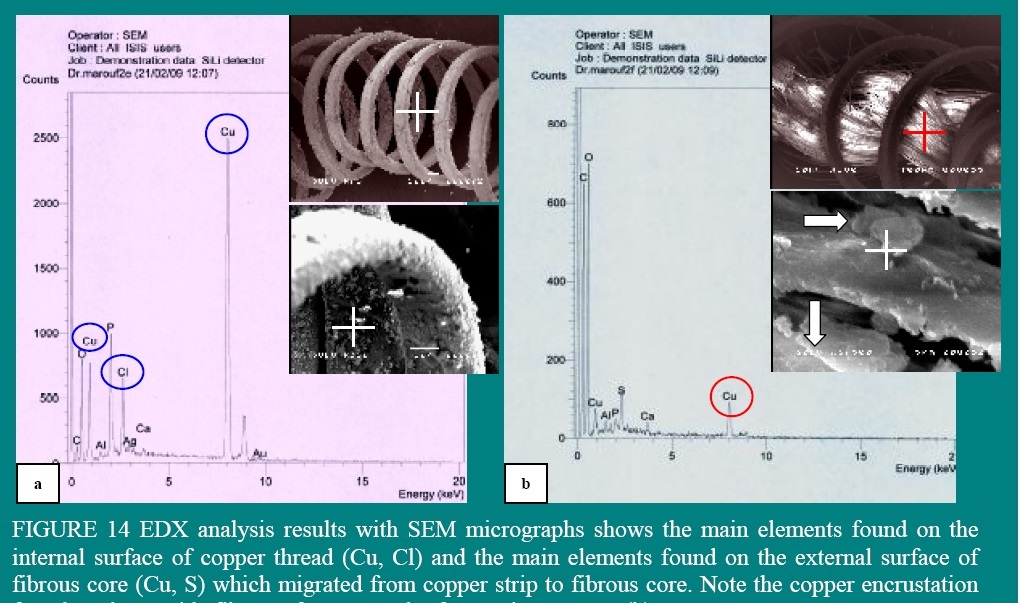Embroideries are considered one of the most important complex textiles which are distinguished with a
raised pattern by using additional threads called extra yarns. They are generally thicker than the original warp and weft threads. Usually, they are made of metal threads. These metal threads are made of gold, silver, copper and/or their alloys as well as gilt and silvered fiber. Although, this technique gives rich surface for aspect of textile, it usually causes a lot of damage as a result of exposure to corrosion of metal threads. The main objectives of this research are identification of embroideries, investigation of the morphological structure of metal threads, studying the mechanisms of degradation of metal threads and explanation of the deteriorating effects of metal threads on the natural fibers (silk, wool, cotton and linen) that are found in embroideries whether as a fibrous core or as a basic textile. Many investigation and analytical methods were applied to record the degradation affects; Scanning electron microscope [SEM] and stereo microscope (SM) as well as energy dispersive X-ray analysis system [EDX] and X-ray diffraction [XRD]. The study introduces many important results that led to the detection of the aspects of harmful effects of the metal threads. In addition, it explains the relationship between the nature of chemical composition of metal threads and mechanism of their degradation as well as the mechanism of degradation of natural fibers via corroded metal threads.


